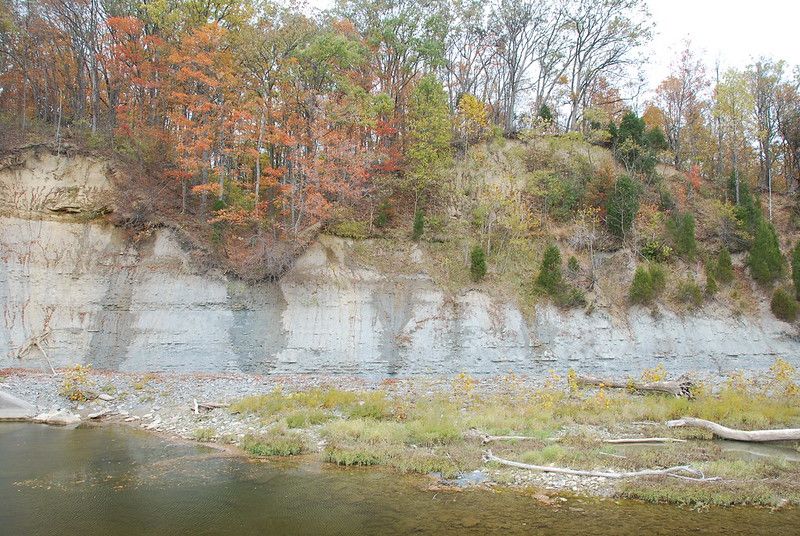The rock cliffs on the far shore of Twin Creek are limestone. This layer of rock often shows remains of past life (fossils) from 450 million years ago. Some of the fossils that are often found downstream include brachiopods, horn corals, and bryozoans. These are all animals that lived in a shallow warm sea covering Ohio. You may have heard that Ohio is part of a continental plate floating on molten rock, and that it moves around the earth very slowly occasionally bumping into other continental plates.
The process that describes this continental movement is called plate tectonics. Ohio was closer to the earth’s equator 450 million years ago, and as mud washed down the rivers into the shallow sea it covered some of the animals and preserved them as today’s fossils.
A fossil collection area can be accessed at the Bob Siebenthaler Natural Area entrance of Germantown MetroPark. Collecting fossils is permitted only in the marked area. Follow the rules posted at the site.
